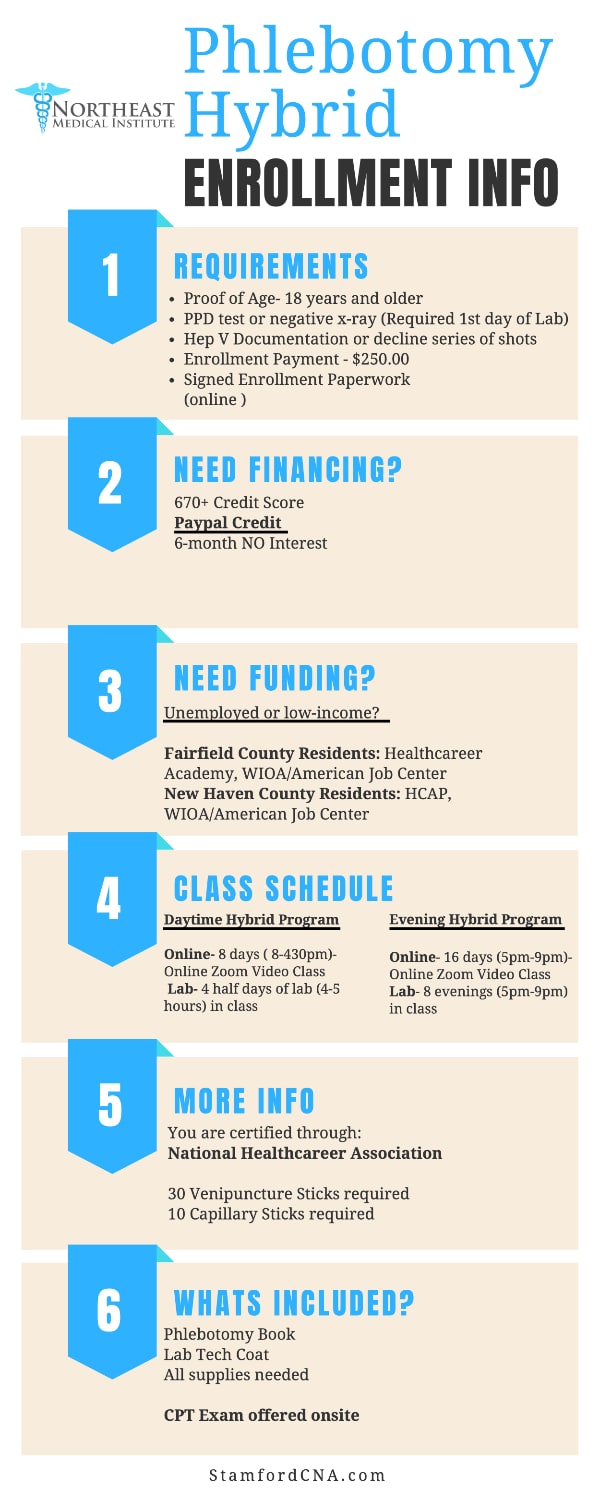Little Known Questions About Northeast Medical Institute - New Haven Campus Phlebotomy Course & Cna Class.
Little Known Questions About Northeast Medical Institute - New Haven Campus Phlebotomy Course & Cna Class.
Blog Article
The Best Strategy To Use For Northeast Medical Institute - New Haven Campus Phlebotomy Course & Cna Class
Table of ContentsThe 4-Minute Rule for Northeast Medical Institute - New Haven Campus Phlebotomy Course & Cna ClassTop Guidelines Of Northeast Medical Institute - New Haven Campus Phlebotomy Course & Cna ClassSome Known Details About Northeast Medical Institute - New Haven Campus Phlebotomy Course & Cna Class Northeast Medical Institute - New Haven Campus Phlebotomy Course & Cna Class - The FactsSome Ideas on Northeast Medical Institute - New Haven Campus Phlebotomy Course & Cna Class You Need To KnowNortheast Medical Institute - New Haven Campus Phlebotomy Course & Cna Class for Beginners
The usage of such gadgets need to be come with by various other infection prevention and control methods, and training in their use. Not all safety and security tools apply to phlebotomy. Prior to picking a safety-engineered gadget, customers should thoroughly investigate offered tools to determine their proper usage, compatibility with existing phlebotomy techniques, and effectiveness in protecting team and people (12, 33).For settings with reduced resources, price is a driving consider procurement of safety-engineered devices - PCT Training. Where safety-engineered devices are not available, knowledgeable use of a needle and syringe serves. Unexpected exposure and particular details concerning an event ought to be tape-recorded in a register. Support solutions ought to be advertised for those who go through unintended direct exposure.
Among the important markers of top quality of treatment in phlebotomy is the involvement and collaboration of the person; this is equally beneficial to both the wellness worker and the patient. Clear details either composed or verbal must be offered to each patient who goes through phlebotomy. Annex F provides sample text for describing the blood-sampling procedure to a client. In the blood-sampling space for an outpatient department or clinic, provide a comfortable reclining sofa with an arm remainder.
The Northeast Medical Institute - New Haven Campus Phlebotomy Course & Cna Class Diaries
Ensure that the indicators for blood sampling are clearly defined, either in a composed method or in documented directions (e.g. in a research laboratory type). In any way times, adhere to the strategies for infection prevention and control detailed in Table 2.2. Infection prevention and control methods. Accumulate all the devices required for the procedure and area it within risk-free and easy reach on a tray or cart, ensuring that all the things are plainly visible.
Where the client is grown-up and aware, follow the steps detailed listed below. Present yourself to the client, and ask the individual to mention their complete name. Check that the laboratory type matches the individual's identification (i.e. match the person's information with the laboratory form, to guarantee precise identification). Ask whether the patent has allergies, fears or has actually ever before passed out during previous injections or blood draws.
Make the individual comfy in a supine setting (if possible). The person has a right to reject an examination at any time prior to the blood tasting, so it is essential to make sure that the person has comprehended the treatment - Phlebotomy Training.
About Northeast Medical Institute - New Haven Campus Phlebotomy Course & Cna Class
Prolong the patient's arm and check the antecubital fossa or lower arm. Locate a blood vessel of an excellent dimension that is visible, straight and clear. The layout in Area 2.3, shows typical placements of the vessels, however many variants are possible. The typical cubital blood vessel exists between muscle mass and is normally one of the most simple to penetrate.
DO NOT put the needle where capillaries are drawing away, since this increases the possibility of a haematoma. The capillary must show up without applying the tourniquet. Locating the capillary will assist in establishing the correct size of needle. Apply the tourniquet regarding 45 finger widths over the venepuncture site and re-examine the capillary.
Specimens from central lines bring a risk of contamination or wrong research laboratory examination outcomes. It is acceptable, but not perfect, to attract blood samplings when initial presenting an in-dwelling venous tool, before linking the cannula to the intravenous liquids.
Indicators on Northeast Medical Institute - New Haven Campus Phlebotomy Course & Cna Class You Should Know
Failing to permit sufficient contact time boosts the risk of contamination. DO NOT touch the cleansed site; in specific, DO NOT position a finger over the vein to direct the shaft of the revealed needle.
Ask the patient to create a fist so the capillaries are extra popular. Get in the blood vessel swiftly at a 30 level angle or less, and continue to introduce the needle along the vein at the easiest angle of entrance - Phlebotomy Classes. As soon as sufficient blood has been gathered, release the tourniquet BEFORE taking out the needle
More About Northeast Medical Institute - New Haven Campus Phlebotomy Course & Cna Class
Take out the needle delicately and use gentle stress to the site with a tidy gauze or dry cotton-wool ball. Ask the patient to hold the gauze or cotton woollen in position, with the arm expanded and increased. Ask the client NOT to bend the arm, because doing so causes a haematoma.

All About Northeast Medical Institute - New Haven Campus Phlebotomy Course & Cna Class
Where feasible, keep the tubes in a rack and relocate the rack in the direction of you - https://sketchfab.com/northeastmed. If the example tube does not have a rubber stopper, inject exceptionally gradually right into official website the tube as minimizing the pressure and rate made use of to move the specimen reduces the risk of haemolysis.

Report this page